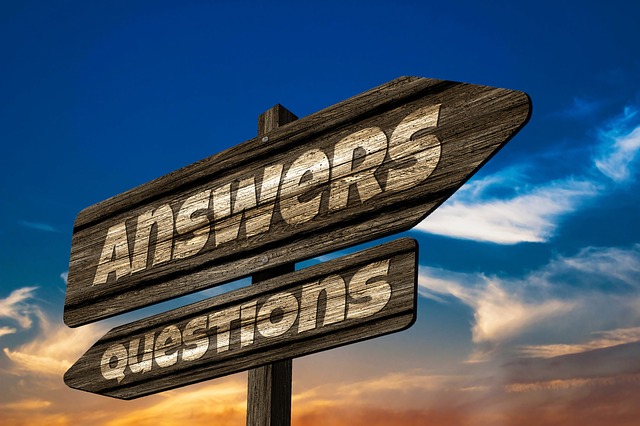Regular readers know my work focuses on building more relevant content for the target audience. One of the common objections to this goal is that it is very difficult. How do I know what my audience needs? How do I build content to meet their most pressing needs? How do I get this content in front of them in a timely manner? How do I scale this across multiple marketing teams vying for the limited time and attention of the same audience?
Our book, Outside-In Marketing, is full of answers to these questions. Still, a lot of the answers require a lot of effort and investment, especially for large content organizations. But there is one simple thing you can do right away to get more relevant content in front of your target audience:
Stop doing short-term digital marketing campaigns.
How does this help? Chances are, your content footprint is bloated. You’ve got thousands of pieces of content on tens of thousands of web pages and very little of it gets any traffic, engagement, or leads. Why? If you did an audit of the content, you would see that very little of it answers a unique question or solves a unique problem for the target audience.
If there are 100 pressing questions for which your target audiences need answers, chances are, you have 10,000 pieces of content that answer those questions. Instead of creating one excellent content experience to answer each important question of your target audience, you have created 100 different ways to answer them, each answering the question in a mediocre way. And though the 100 different answers are functional duplicates, they appear different because they were created at different times, with different branding and messaging. All this does is confuse your audience, and the bots that serve them, principally Google.
If this is your situation, the culprit is short-term campaigns. Every time you create a new digital marketing campaign, you start fresh with branding, messaging, and design. You write new content that fits into the design and UX patterns. And you do all the right things to get it attention—paid media, social, search, etc. Then three to six months later, new branding guidelines come down from on high and you do the whole thing over again. You never stop to consider that you are just on the cusp of getting ranked in organic search or noticed by social influencers for the last campaign. You just plow straight ahead and do a new page with all new assets, paid and social media tactics.
New digital campaigns take four to six months to mature. Maturity involves links and shares and other signals that cue the search engines of the importance of the content. Until a campaign is mature, virtually all the traffic and engagement comes from paid media. Once it is mature, you can begin to turn off paid media and rely on organic. But if you create a new campaign with new differentiation and branding messages, that will then compete with the previous one, preventing maturity. If this is your cadence, you never actually achieve maturity, and all you have is a bunch of old stuff that is off-brand and off-message.
And that’s why you have 10,000 pieces of content to answer the 100 questions your target audiences have. You’ve been building a new campaign every six months, each competing with the previous one.
You could say, “We solved that! We retire all the old campaigns when we create new ones.” That’s not any better. Sure, you don’t have a lot of old stuff laying around, but you still never reach organic maturity. And if you have new branding every time you have a new campaign, you are forcing your audience to learn your messaging in order to understand your content. Digital audiences hate that. They like familiar old answers to common questions. It requires less cognitive effort—the lever of relevance.
If this is your method, you have to pay for every customer, and that defeats the advantage of digital. The advantage of digital is to reduce customer acquisition costs by building content that serves audience needs, attracting them to your experiences without paid media. Study after study show that organic audiences are much more engaged than paid visitors and much more likely to become loyal customers. Short-term campaigns undercut any chance for this kind of digital success.
The alternative: Evergreen content
The solution is rather simple. Find out the top questions your target audiences need answered and build digital experiences that provide the answers in a compelling way. You can find out the top questions through search query analysis. This is ever more effective as voice queries are typically phrased as questions. If you build excellent digital experiences that answer your audiences’ most frequent questions, you will develop a large set of loyal customers who will become advocates for your brand.
Building excellent experiences doesn’t happen overnight. You have to take your best shot, test, and iterate. But if you stick to it, then within four to six months your content will achieve organic maturity. Paid media can accelerate the testing by increasing interactions with your content both on and off your site. But once you reach organic maturity, you can reinvest your paid media on the next piece of evergreen content that serves audience needs.
Evergreen content needs regular care and feeding. You will have to connect it to new branding and messaging that gets passed down from the ivory towers of Marketing. But your audience won’t mind so much because the experience will be familiar, and the new branding will just freshen up the site, providing more compelling ways to answer familiar questions. As long as you lead with language familiar to the customer, you can condition the conversation towards the new branding when they are ready.
The ultimate benefit of evergreen content is repeat visitors, who come to your experiences to gain ever deeper expertise with your strategic value propositions. If you cookie them, you can give them personalized content that takes them to the next step in their customer journeys with each successive visit. Again, the experience is familiar, yet it contains new items that helps customers through their buying due diligence, support, and community outreach.




